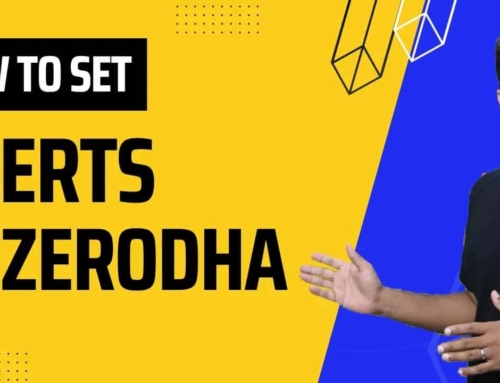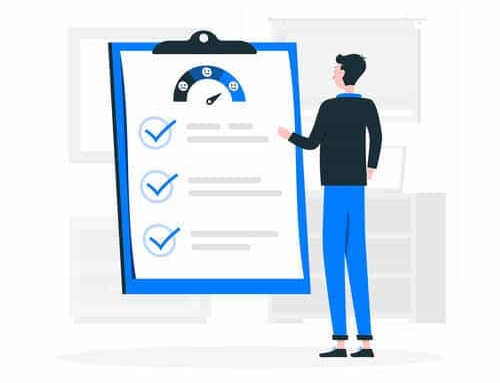7 deadly sins of intraday trading
In this session, we will talk about the 7 deadly sins of intraday trading. The reason these sins are deadly is that any of these mistakes can potentially kill your dream of becoming a successful trader. So let’s get started.
-
Short delivery
The first sin is Short delivery and it is one of the least understood yet extremely deadly mistakes that newcomers make. In case you don’t know what short delivery is, check out the link in the description below as we have made an entire video just on this topic. Shorting a stock intraday, and not being able to cover the position before the end of the trading session, means that you sold shares, but you were not able to buy them back.
It can happen for a couple of reasons. Number one, the stock that you shorted hits the upper circuit and hence there is no further buying possible in that stock. Number two is you thought that your broker will auto square-off your position, but he didn’t see at the end of the day and you are responsible for your positions.
What people don’t know about short delivery is that it’s a really expensive mistake. What happens behind the scenes is that after the trading session is over, all these short delivered cases are sent for auction by the stock exchanges, and you cannot participate in it.
Yet you are responsible for whatever price that they settle for. This whole process is not very transparent and it can drag on for several days. On top of that, the stock exchange also imposes a severe penalty on short deliveries, but how much you will end up losing is anybody’s guess. But I will give you an idea.
A trader that I’ve worked with recently lost about 60,000 rupees on a short delivery while his account only had 1 lakh rupees. You can imagine the kind of damage short delivery can do. So here are the ways of avoiding short deliveries. Number one is don’t short hot stocks which means that stocks that are showing the unusual price, volume and momentum should not be shorted. Number 2 is; always checking for the upper circuit of the stocks before shorting them and Number 3 is; always keeping a stop loss market order below the upper circuit limit price.
-
Excessive Leverage
Now let’s move on to some fundamental sins. Sin number 2 is taking excessive leverage. In this day and age, where brokers offer us up to 10 times, 20 times and even 40 times leverage, it is easy to get carried away and take trades that are way above your risk level. I meet traders who just have 1 lakh rupees in their trading account and are taking 10 times their capacity. Why do traders do that?
It’s because of greed and the urge to make money quickly, but the problem with leverage is that it is a double edge sword and can cut both ways. A trade that can potentially give you a hundred per cent gains can also take away 50% of your capital. Another problem with excess leverage is that when a trader with only one lakh rupees sees his position in the loss of say 20,000 rupees, he can get scared very easily and will be forced to book losses only to find later that the stock turned around and that he could have made a profit in the trade.
So because of the excess of leverage, your fear gets kicked in very quickly. Now here’s my advice regarding excessive leverage. Number one, never take trades more than 5 times of your capital and number two is before entering into any trade, ask yourself if you’re comfortable losing 2% of that traded amount.
If you’re not, then you’re not supposed to take it.
-
Trading Addiction
Sin number 3 is trading addiction. Some traders get addicted to trading, just like people get addicted to gambling or smoking. They need that rush from every trade and without trading, they feel immense boredom and emptiness. If you are one of those traders who starts acting like a gambler the moment the stock market opens, then be ready. It’s just a matter of time that you will lose all your money and will be out of the market. Addiction to trading is a serious problem, and I strongly advise you to take professional help. If you find yourself trading excessively, my advice is to follow the rule of 6. It means that the maximum number of trades that you can take in any day is 6 and every once in a while, take a day off from trading and see how your mind reacts. If you feel the urge of trading, it means that you are slowly developing a gamblers tendency. Watch out for this.
-
Adding more money to a losing position
Number four is adding more money to a losing position. This sin doesn’t sound like a sin, but trust me. When a trade is not working out, traders sometimes tend to put more money into the trade to get the average prices down, but what they don’t realize is that they’re only digging a deeper hole by throwing good money after bad money. If your trade is giving losses, accept that it was not a good trade, take a modest loss and get out of there. Don’t keep messing around with it by adding more capital to the trade or one day the market will cut you very deep.
-
Not putting a stop loss to every trade
Sin Number five is not putting a stop loss to every trade. Not putting a stop to loss is like walking on a tightrope without a safety net. Maybe a few times you can get away with it, but when you lose your balance, the consequences of that can be disastrous.Stop-loss forces you to cut the losses when the losses are small and makes you admit that you were wrong. Without them, the losses will just keep on piling and sometimes irreversible damages can happen to your trading account. It is not hard to put a stop to losing guys and so don’t make any excuses.
-
Trading on tips
Send number six is Trading on tips. The moment you open a trading account, you will be bombarded with these so-called stock tip services. A lot of beginners get sucked into these scams and note that these services are plain and simple frauds.Ignore the buy and sell recommendations by the TV pundits that are designed for suckers. If you are serious about trading, you should start thinking for yourself.
-
Trading with scared capital
Sin number seven is trading with scared capital. Scared capital is money that you cannot afford to lose. It might be the money that you bought from your friends or family, or it may be money that you would need to pay your children’s school fees or for taking care of your family. When you trade with scared capital, every loss comes with debilitating fear. People get into the mindset of how to recover the losses and take even riskier trades to recoup their losses. In my experience, anybody trading with scared capital is destined to fail. So follow this simple rule; don’t trade with the money that you cannot afford to lose.
Stay away from these 7 sins and you will have much better odds of success in the stock market. Remember that in the race of the stock market, that the tortoise will always win the race. In other words, don’t take shortcuts, get rich slowly, or get poor quickly. If you have any questions about this session or the stock market in general, leave them in the comments section below, and we will try to answer them.
All the best and take care.
7 deadly sins of intraday trading
In this session, we will talk about the 7 deadly sins of intraday trading. The reason these sins are deadly is that any of these mistakes can potentially kill your dream of becoming a successful trader. So let’s get started.
-
Short delivery
The first sin is Short delivery and it is one of the least understood yet extremely deadly mistakes that newcomers make. In case you don’t know what short delivery is, check out the link in the description below as we have made an entire video just on this topic. Shorting a stock intraday, and not being able to cover the position before the end of the trading session, means that you sold shares, but you were not able to buy them back.
It can happen for a couple of reasons. Number one, the stock that you shorted hits the upper circuit and hence there is no further buying possible in that stock. Number two is you thought that your broker will auto square-off your position, but he didn’t see at the end of the day and you are responsible for your positions.
What people don’t know about short delivery is that it’s a really expensive mistake. What happens behind the scenes is that after the trading session is over, all these short delivered cases are sent for auction by the stock exchanges, and you cannot participate in it.
Yet you are responsible for whatever price that they settle for. This whole process is not very transparent and it can drag on for several days. On top of that, the stock exchange also imposes a severe penalty on short deliveries, but how much you will end up losing is anybody’s guess. But I will give you an idea.
A trader that I’ve worked with recently lost about 60,000 rupees on a short delivery while his account only had 1 lakh rupees. You can imagine the kind of damage short delivery can do. So here are the ways of avoiding short deliveries. Number one is don’t short hot stocks which means that stocks that are showing the unusual price, volume and momentum should not be shorted. Number 2 is; always checking for the upper circuit of the stocks before shorting them and Number 3 is; always keeping a stop loss market order below the upper circuit limit price.
-
Excessive Leverage
Now let’s move on to some fundamental sins. Sin number 2 is taking excessive leverage. In this day and age, where brokers offer us up to 10 times, 20 times and even 40 times leverage, it is easy to get carried away and take trades that are way above your risk level. I meet traders who just have 1 lakh rupees in their trading account and are taking 10 times their capacity. Why do traders do that?
It’s because of greed and the urge to make money quickly, but the problem with leverage is that it is a double edge sword and can cut both ways. A trade that can potentially give you a hundred per cent gains can also take away 50% of your capital. Another problem with excess leverage is that when a trader with only one lakh rupees sees his position in the loss of say 20,000 rupees, he can get scared very easily and will be forced to book losses only to find later that the stock turned around and that he could have made a profit in the trade.
So because of the excess of leverage, your fear gets kicked in very quickly. Now here’s my advice regarding excessive leverage. Number one, never take trades more than 5 times of your capital and number two is before entering into any trade, ask yourself if you’re comfortable losing 2% of that traded amount.
If you’re not, then you’re not supposed to take it.
-
Trading Addiction
Sin number 3 is trading addiction. Some traders get addicted to trading, just like people get addicted to gambling or smoking. They need that rush from every trade and without trading, they feel immense boredom and emptiness. If you are one of those traders who starts acting like a gambler the moment the stock market opens, then be ready. It’s just a matter of time that you will lose all your money and will be out of the market. Addiction to trading is a serious problem, and I strongly advise you to take professional help. If you find yourself trading excessively, my advice is to follow the rule of 6. It means that the maximum number of trades that you can take in any day is 6 and every once in a while, take a day off from trading and see how your mind reacts. If you feel the urge of trading, it means that you are slowly developing a gamblers tendency. Watch out for this.
-
Adding more money to a losing position
Number four is adding more money to a losing position. This sin doesn’t sound like a sin, but trust me. When a trade is not working out, traders sometimes tend to put more money into the trade to get the average prices down, but what they don’t realize is that they’re only digging a deeper hole by throwing good money after bad money. If your trade is giving losses, accept that it was not a good trade, take a modest loss and get out of there. Don’t keep messing around with it by adding more capital to the trade or one day the market will cut you very deep.
-
Not putting a stop loss to every trade
Sin Number five is not putting a stop loss to every trade. Not putting a stop to loss is like walking on a tightrope without a safety net. Maybe a few times you can get away with it, but when you lose your balance, the consequences of that can be disastrous.Stop-loss forces you to cut the losses when the losses are small and makes you admit that you were wrong. Without them, the losses will just keep on piling and sometimes irreversible damages can happen to your trading account. It is not hard to put a stop to losing guys and so don’t make any excuses.
-
Trading on tips
Send number six is Trading on tips. The moment you open a trading account, you will be bombarded with these so-called stock tip services. A lot of beginners get sucked into these scams and note that these services are plain and simple frauds.Ignore the buy and sell recommendations by the TV pundits that are designed for suckers. If you are serious about trading, you should start thinking for yourself.
-
Trading with scared capital
Sin number seven is trading with scared capital. Scared capital is money that you cannot afford to lose. It might be the money that you bought from your friends or family, or it may be money that you would need to pay your children’s school fees or for taking care of your family. When you trade with scared capital, every loss comes with debilitating fear. People get into the mindset of how to recover the losses and take even riskier trades to recoup their losses. In my experience, anybody trading with scared capital is destined to fail. So follow this simple rule; don’t trade with the money that you cannot afford to lose.
Stay away from these 7 sins and you will have much better odds of success in the stock market. Remember that in the race of the stock market, that the tortoise will always win the race. In other words, don’t take shortcuts, get rich slowly, or get poor quickly. If you have any questions about this session or the stock market in general, leave them in the comments section below, and we will try to answer them.
All the best and take care.



![What is Virtual Contract Note [Zerodha]](https://www.vrdnation.com/wp-content/uploads/2023/10/maxresdefault-virtual-note-500x383.jpg)



This explained me in detail. Thanks for helping me out to realize all my ains.